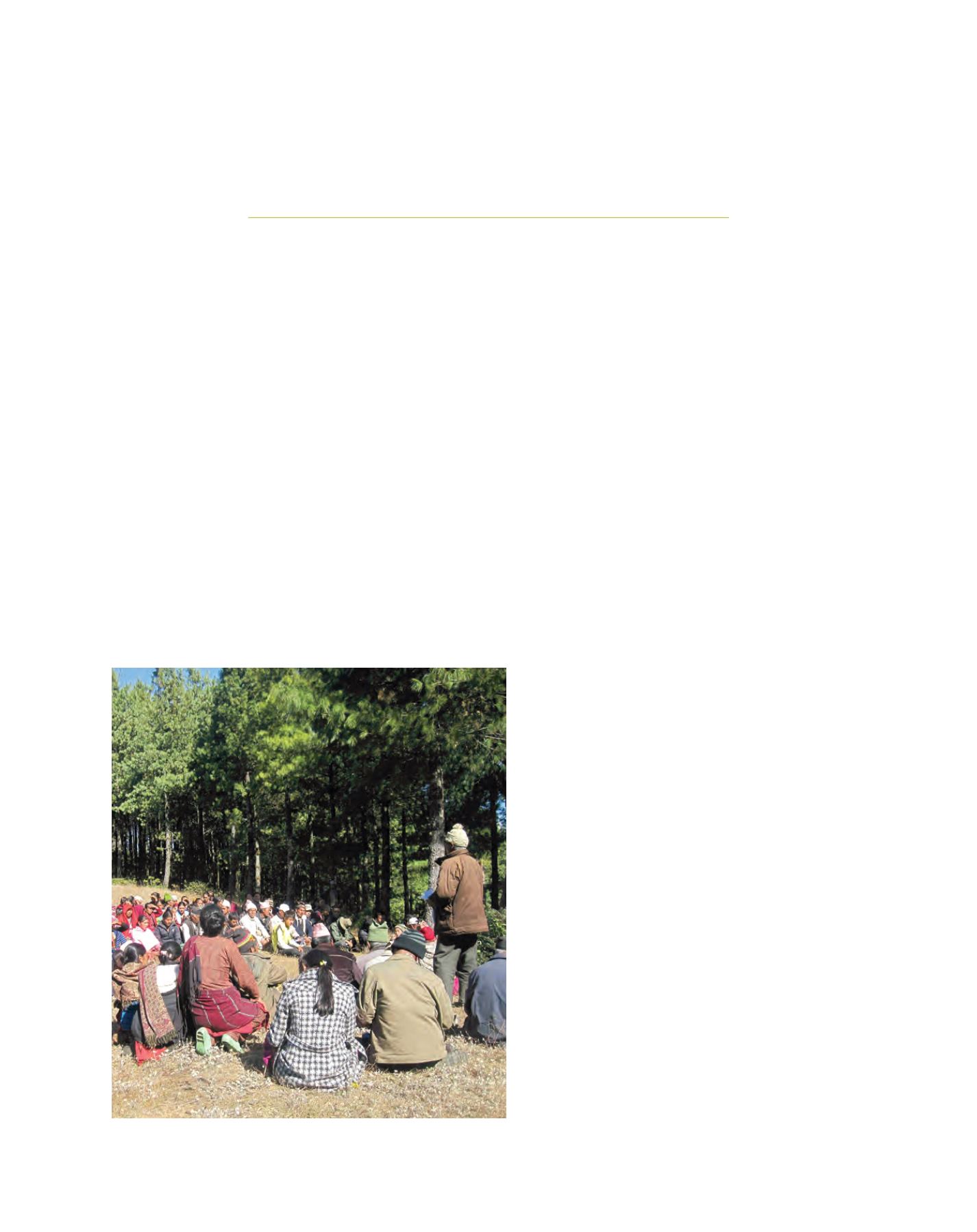

[
] 199
Forest Stewardship Council certification:
forests for people, in practice
Alistair Monument, Forest Stewardship Council
D
hana Lama represents just one of some 22 commu-
nity forest user groups which together manage 14,145
hectares of Forest Stewardship Council (FSC) certified
forests in the Himalayan foothills of Nepal. Here, a unique
alliance of representatives from industry, government, NGOs,
communities and forest certifiers was brought together by the
Asia Network for Sustainable Agriculture and Bioresources.
Together they created the Private-Public Alliance on the
Certification and Sustainable Marketing of Non-timber Forest
Products. Promoting sustainable resource management, at the
same time as increasing incomes from non-timber forest prod-
ucts and expanding responsible buying practices are major
objectives of the alliance. FSC certification, under a group certi-
fication scheme, provides the vehicle to achieve these objectives.
“Forests are an integral part of local people’s livelihoods as they have
harvested fuelwood, fodder, medicinal plants, fruits and more since
time immemorial,” explains Dhana Lama, executive
committee member of the Bhitteri Pakha community
forest user group in Nepal. “Introduction of certification
made people aware of sustainable forest management.
Now they understand that forests and their biodiver-
sity are very important and they should use them in a
sustainable manner.”It’s a strategy that is paying off.
With the help of the Federation of Community Forestry
Users Nepal (FECOFUN), communities have been able
to improve their forest management, strengthen their
conservation efforts and reinforce their democratic
institutions. “All certified community forests are better
in terms of participation, benefit sharing, decision-
making and fund utilization,” says Apsara Chapagain,
chair of FECOFUN. The organization works as a
resource manager for the group certification scheme,
helping community forest user groups to implement
forest management guidelines and providing capacity-
building and monitoring activities on the ground.
For many people working in small-scale forestry, this
is the model of FSC certification that is most successful.
Established in 1993, FSC certification provides an inter-
nationally recognized assurance of responsible forest
management. The logo appears on billions of wood,
paper and other forests products around the world,
making it a globally recognized label for consumers
seeking forest products that benefit people, safeguard
the environment and support sustainable businesses.
How does FSC certification work?
FSC has a direct, permanent and positive impact on
the world’s forests and the people living in and around
them. It is recognized worldwide for applying the
highest social and environmental standards in forestry.
The FSC’s ten principles describe how forests should
be managed to meet the social, economic, ecological,
cultural and spiritual needs of current and future gener-
ations. These principles are subject to periodic review
and revision, under rules designed to ensure a balance
between social, economic and environmental interests
as well as a north-south equilibrium.
FSC doesn’t issue certificates itself. This is done by
independent certification bodies, which check that
forest owners and managers meet the FSC’s standards
for forest management. Separate chain of custody certif-
icates allow FSC-certified wood products to be credibly
General assembly of users of the certified community forest, Dolakha, Nepal
Image: ANSAB, Nepal
















